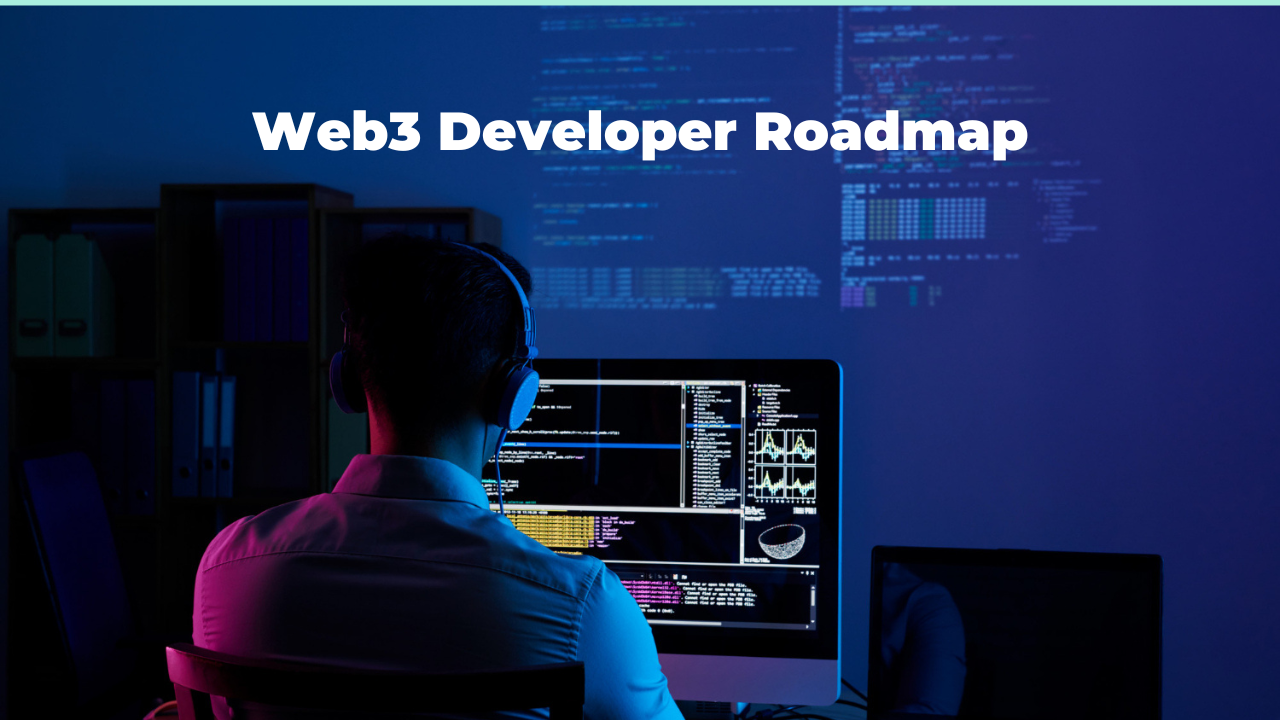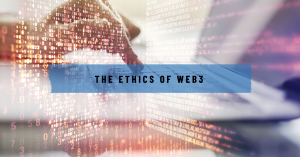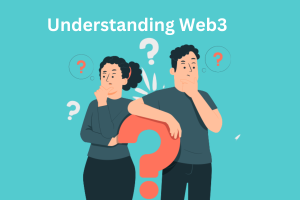Web3 development is a rapidly evolving field, and keeping up with the latest trends and technologies can be challenging. However, for those interested in becoming a Web3 developer, there are plenty of resources available to help you get started. In this article, we will provide a comprehensive roadmap for becoming a Web3 developer in 2023.
Whether you’re a seasoned developer looking to reposition your career or a beginner just starting out, this roadmap will help guide you through the essential steps you need to take to achieve your goals. From learning the basics of blockchain technology to mastering smart contracts and Ether.js, we will cover everything you need to know to become a successful Web3 developer.
By following this roadmap, you will be well on your way to becoming a skilled Web3 developer and taking advantage of the explosive growth in this exciting field. So, let’s dive in and explore the complete Web3 developer roadmap for 2023!
Web3 Fundamentals
To become a Web3 developer, it’s important to have a strong understanding of the fundamentals. This section will cover the basics of blockchain, decentralized applications (dApps), and smart contracts.
Blockchain Basics
Blockchain is a distributed ledger technology that allows for secure and transparent transactions without the need for intermediaries. It is the underlying technology that powers cryptocurrencies like Bitcoin and Ethereum. A blockchain is composed of a network of nodes that work together to verify and validate transactions. Each block in the chain contains a record of multiple transactions that have been verified by the network. Once a block is added to the chain, it cannot be altered or deleted.
Some key concepts to understand in blockchain include:
- Consensus mechanisms, are used to ensure that all nodes on the network agree on the state of the blockchain.
- Public and private keys are used to secure transactions and verify ownership.
- Nodes are computers on the network that store a copy of the blockchain.
Decentralized Applications (dApps)
A decentralized application, or dApp, is an application that runs on a blockchain network. Unlike traditional applications, dApps are not controlled by a single entity or organization. They are open-source, transparent, and operate autonomously. dApps can be built on various blockchain platforms, such as Ethereum, Polkadot, and Solana.
Some popular examples of dApps include:
- Uniswap is a decentralized exchange for trading cryptocurrencies.
- Aave, a decentralized lending platform.
- NFT marketplaces, such as OpenSea and Rarible.
Smart Contracts
A smart contract is a self-executing contract that is stored on a blockchain. It contains the terms and conditions of an agreement between two or more parties and automatically executes when certain conditions are met. Smart contracts are written in programming languages such as Solidity (for Ethereum) and Rust (for Polkadot). They can be used for various purposes, such as automating financial transactions, managing supply chains, and creating decentralized organizations.
Some key features of smart contracts include:
- Immutability means that once a smart contract is deployed, it cannot be changed.
- Self-execution means that smart contracts automatically execute when certain conditions are met.
- Transparency means that all parties can view the terms of the contract and the transactions that have taken place.
Web3 Development Languages
Solidity
Solidity is a programming language designed for writing smart contracts on the Ethereum blockchain. It is an object-oriented and Turing-complete language that shares similarities with JavaScript, C++, and Python. Solidity is one of the most popular choices among developers for building decentralized applications and smart contracts.
Developers can use Solidity to write smart contracts for a variety of use cases, including tokenization, crowdfunding, voting systems, and more. It is a high-level language that allows developers to write complex logic in a concise and readable manner.
Some of the key features of Solidity include:
- Static type system
- Event-driven programming
- Automatic memory management
- Support for inheritance and interfaces
JavaScript
JavaScript is a widely used programming language for web development, and it is also used in Web3 development. It is a versatile language that can be used for front-end and back-end development, as well as for building decentralized applications on various blockchains.
In Web3 development, JavaScript is commonly used for building decentralized applications on the Ethereum blockchain. Developers can use JavaScript libraries like web3.js and ethers.js to interact with the Ethereum blockchain and write smart contracts.
Some of the key features of JavaScript include:
- Dynamic typing
- Functional programming
- Asynchronous programming with callbacks and promises
- Support for object-oriented programming
Rust
Rust is a programming language that has gained popularity in recent years for its performance, safety, and concurrency features. It is a systems programming language that is designed to be fast and memory-efficient, making it a good choice for building decentralized applications that require high performance.
In Web3 development, Rust is commonly used for building decentralized applications on the Polkadot blockchain. Developers can use the Substrate framework, which is built using Rust, to write custom blockchain logic and build decentralized applications.
Some of the key features of Rust include:
- Memory safety and thread safety
- Zero-cost abstractions
- Functional programming features
- Pattern matching
Web3 Development Frameworks
Web3 development frameworks are essential tools that simplify the development process for decentralized applications. Let’s take a look at three popular frameworks in 2023.
Truffle
Truffle is a popular development framework for Ethereum-based decentralized applications. It provides a suite of tools that simplify the development process, including smart contract compilation, deployment, and testing. Truffle also comes with a built-in development blockchain that allows developers to test their applications in a simulated environment before deploying them to the main network.
With Truffle, developers can also leverage pre-built contracts and libraries, which can save time and effort. Additionally, Truffle has a large and active community, which means that developers can easily find support and resources.
Embark
Embark is another popular development framework for Ethereum-based decentralized applications. It provides a simple and intuitive interface that allows developers to quickly set up a development environment and start building their applications. Embark also comes with a built-in development blockchain, which makes it easy to test and deploy applications.
One of the key features of Embark is its ability to generate client-side code automatically. This means that developers can focus on writing smart contracts and let Embark handle the rest. Embark also has a plugin system that allows developers to extend its functionality and integrate with other tools and services.
Hardhat
Hardhat is a development environment and testing framework for Ethereum-based decentralized applications. It provides a suite of tools that make it easy to compile, deploy, and test smart contracts. Hardhat also has a built-in development blockchain, which allows developers to test their applications in a simulated environment.
One of the key features of Hardhat is its support for multiple networks. This means that developers can easily switch between different networks, such as the main network, test networks, and private networks. Hardhat also has a plugin system that allows developers to extend its functionality and customize their development environment.
Web3 Development Tools
Ganache
Ganache is a personal blockchain for Ethereum development that allows developers to test their smart contracts and decentralized applications in a safe and controlled environment. It provides a simple and intuitive interface for managing accounts, viewing transaction logs, and debugging smart contracts. Ganache also supports advanced features such as contract deployment, gas management, and mining control.
Remix
Remix is a web-based integrated development environment (IDE) for Solidity smart contracts. It provides a comprehensive set of tools for writing, testing, and deploying smart contracts on the Ethereum blockchain. Remix features a code editor with syntax highlighting and auto-completion, a debugging console for testing and debugging smart contracts, and a deployment manager for deploying contracts to different networks. It also supports plugins and extensions for customizing the IDE.
Metamask
Metamask is a browser extension that allows users to interact with Ethereum decentralized applications (dApps) directly from their web browser. It provides a secure and user-friendly interface for managing Ethereum accounts, sending and receiving Ether and other tokens, and interacting with smart contracts. Metamask also supports advanced features such as gas management, network switching, and custom RPC endpoints.
Web3 development tools are essential for building decentralized applications on the Ethereum blockchain. Ganache, Remix, and Metamask are some of the most popular and widely used tools in the Web3 development community. By leveraging these tools, developers can streamline their development process, increase productivity, and ensure the quality and security of their smart contracts and dApps.
Web3 Deployment and Testing
Deployment Options
When it comes to deploying Web3 applications, there are several options available. Here are some of the most popular ones:
- Ethereum Mainnet: This is the main Ethereum network, where all the live transactions take place. Deploying on the mainnet is the most secure option, but it can also be the most expensive.
- Ropsten Testnet: Ropsten is a test network that mimics the Ethereum mainnet. It’s a good option for testing your application before deploying it on the mainnet.
- Kovan Testnet: Kovan is another Ethereum test network, but it uses a different consensus algorithm than Ropsten. It’s a good option if you want to test your application under different conditions.
- Private Network: You can also set up your own private Ethereum network for testing and development purposes. This can be a good option if you want to test your application in a controlled environment.
Recommended: Remote Web3 Jobs: A Guide to Landing Your First Role with No Prior Experience
Testing Strategies
Testing is an important part of any software development process, and Web3 applications are no exception. Here are some testing strategies you can use to ensure the quality of your application:
- Unit Testing: This involves testing individual functions and components of your application to ensure they work as expected.
- Integration Testing: This involves testing how different components of your application work together.
- End-to-end Testing: This involves testing your application as a whole, including the user interface and all the backend components.
- Load Testing: This involves testing how your application performs under heavy load, to ensure it can handle a large number of users.
It’s important to test your application thoroughly before deploying it, to ensure it works as expected and to minimize the risk of bugs or security vulnerabilities. By using a combination of different testing strategies, you can ensure the quality and reliability of your Web3 application.
Web3 Integration and Interoperability
Web3.js
Web3.js is a collection of libraries that allows developers to interact with the Ethereum blockchain. It provides a simple and easy-to-use interface for developers to connect their applications to the Ethereum network. With Web3.js, developers can create, read, and update smart contracts, send transactions, and interact with decentralized applications (dApps).
Web3.js is compatible with both web and Node.js environments. It supports all the latest versions of Ethereum, including Ethereum 2.0. It also supports other blockchain networks, such as Binance Smart Chain, Polygon, and others.
Some of the key features of Web3.js include:
- Easy integration with the Ethereum blockchain
- Support for multiple blockchain networks
- Simple and easy-to-use API
- Support for smart contract development and interaction
IPFS
InterPlanetary File System (IPFS) is a decentralized file storage system that allows developers to store and retrieve files on a peer-to-peer network. IPFS uses content-addressing to identify files, which means that files are identified by their content rather than their location.
IPFS can be used to store any type of file, including HTML, CSS, JavaScript, images, videos, and more. It can also be used to store entire websites, which can be accessed using a unique IPFS hash.
Some of the key features of IPFS include:
- Decentralized file storage
- Content-addressing for file identification
- Support for large files
- Ability to host websites
OrbitDB
OrbitDB is a distributed database built on top of IPFS. It provides a simple and easy-to-use interface for developers to build decentralized applications that require data storage. OrbitDB supports various data structures, including key-value stores, document stores, and time-series databases.
OrbitDB is designed to work in offline and low-connectivity environments. It uses CRDTs (Conflict-free Replicated Data Types) to ensure data consistency and integrity in a distributed environment.
Some of the key features of OrbitDB include:
- A distributed database built on top of IPFS
- Support for various data structures
- Designed to work in offline and low-connectivity environments
- Uses CRDTs for data consistency and integrity
Web3 Developer Roadmap Conclusion
Congratulations on completing the Complete Web3 Developer Roadmap for 2023! By now, you should have a solid understanding of the skills and knowledge required to become a Web3 developer, including blockchain technology, programming languages like Solidity and JavaScript, and smart contract development.
Remember that becoming a Web3 developer is a journey, and it takes time and effort to master the necessary skills. Keep practicing and learning, and don’t be afraid to ask for help or collaborate with others in the Web3 community.
It’s also important to stay up-to-date with the latest developments and trends in the Web3 space. Follow blogs, attend conferences, and participate in online communities to stay informed and connected with other Web3 developers.
Finally, remember that the Web3 space is constantly evolving, and new technologies and tools are being developed all the time. Be open to new ideas and approaches, and be willing to adapt and learn as the Web3 landscape continues to grow and change.



